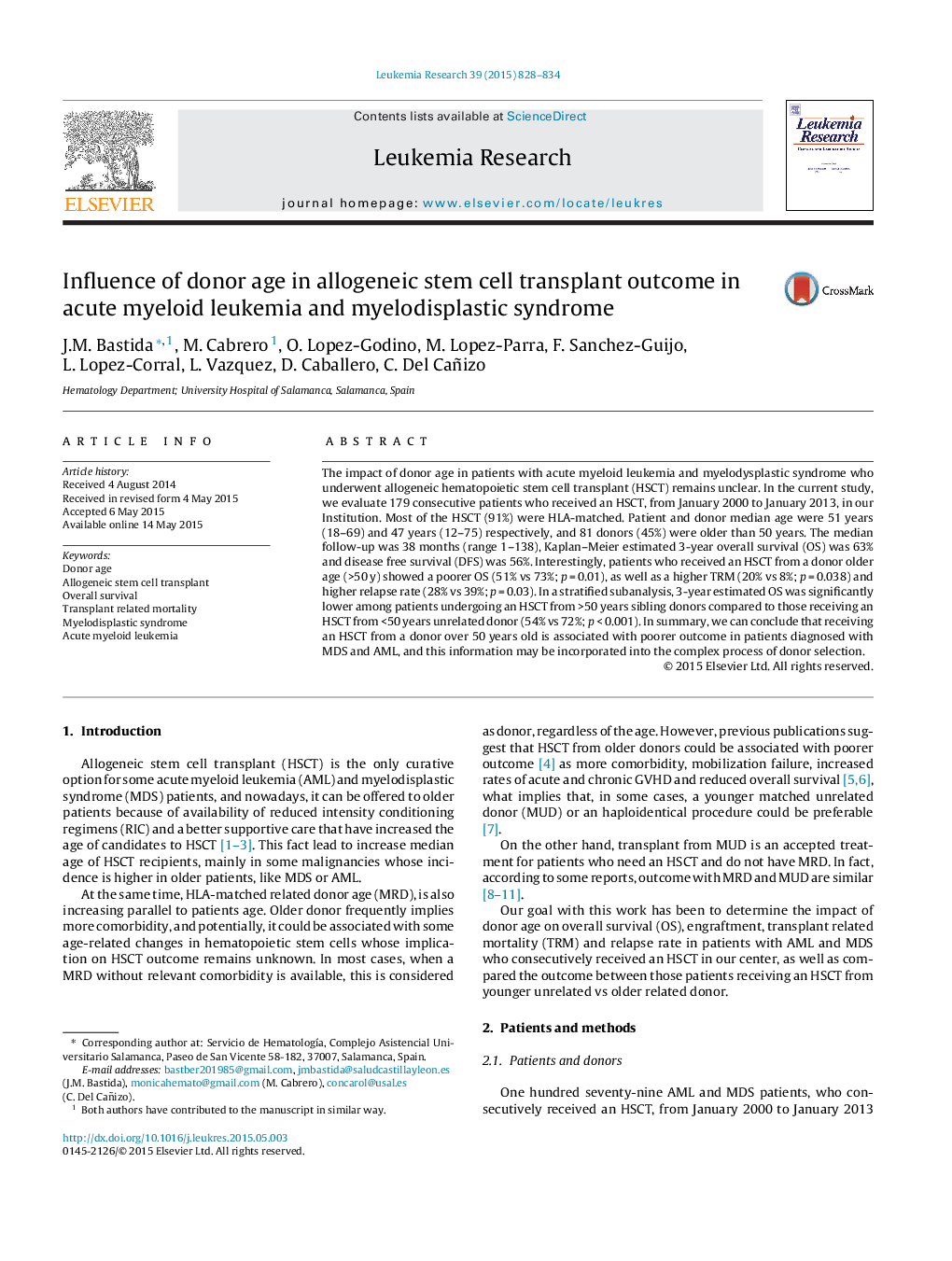| Article ID | Journal | Published Year | Pages | File Type |
|---|---|---|---|---|
| 2136591 | Leukemia Research | 2015 | 7 Pages |
•Patient age did not show any significant influence in outcomes HSCT.•Donor age shows better OS and DFS for patients who received hematopoietic stem cell transplantation from a younger donor (<50 years).•Donor age increases TRM among patients with HLA identical donor and a higher relapse rate.
The impact of donor age in patients with acute myeloid leukemia and myelodysplastic syndrome who underwent allogeneic hematopoietic stem cell transplant (HSCT) remains unclear. In the current study, we evaluate 179 consecutive patients who received an HSCT, from January 2000 to January 2013, in our Institution. Most of the HSCT (91%) were HLA-matched. Patient and donor median age were 51 years (18–69) and 47 years (12–75) respectively, and 81 donors (45%) were older than 50 years. The median follow-up was 38 months (range 1–138), Kaplan–Meier estimated 3-year overall survival (OS) was 63% and disease free survival (DFS) was 56%. Interestingly, patients who received an HSCT from a donor older age (>50 y) showed a poorer OS (51% vs 73%; p = 0.01), as well as a higher TRM (20% vs 8%; p = 0.038) and higher relapse rate (28% vs 39%; p = 0.03). In a stratified subanalysis, 3-year estimated OS was significantly lower among patients undergoing an HSCT from >50 years sibling donors compared to those receiving an HSCT from <50 years unrelated donor (54% vs 72%; p < 0.001). In summary, we can conclude that receiving an HSCT from a donor over 50 years old is associated with poorer outcome in patients diagnosed with MDS and AML, and this information may be incorporated into the complex process of donor selection.
